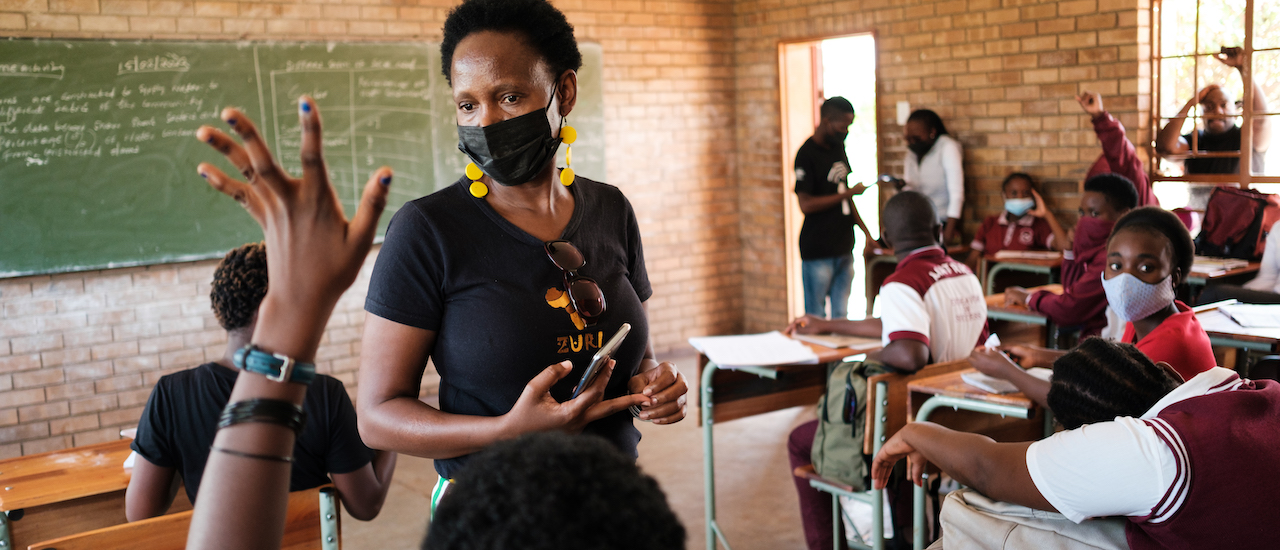At the close of 2021, new data from the International Telecommunications Union (ITU) showed we’re slowly progressing in bringing more people online. But there is still a long way to go. Nearly three billion people around the world are still living without the Internet. In today’s world that means they’re not only living without opportunities, but they’re also being left behind on an emerging digital economy and losing out on essential public services.
The traditional model of providing connectivity, where Internet service providers are leading infrastructure deployment, has been effective in connecting those living in urban and densely populated areas, but it struggles to reach those who need it the most in rural, isolated, and low-income areas. This is why we’ve worked for more than a decade in promoting complementary connectivity solutions, such as community networks, that reach the areas where traditional services don’t.
When we developed our five-year strategy leading to 2025, we set out to support the deployment of 50 community networks. With three years to go, we’ve already exceeded this target, supporting 58 networks around the world. Many of those communities are changing lives beyond their own.
The Murambinda community network in Zimbabwe is a good example. It proved so successful that it helped change regulations in the country, opening the path to many other communities that want to build and maintain their Internet infrastructure. Just like Murambinda, many other community networks are not only providing connectivity to the people that need it, but also growing the Internet and bringing education and social and economic development to areas that were left behind.
These solutions will help us achieve universal connectivity—and we want to be bolder and seek greater targets. So we’re joining the Partner2Connect Digital Coalition and pledging to scale up our work.
About Partner2Connect
The Partner2Connect Digital Coalition (P2C) is a multistakeholder alliance launched by the ITU. It fosters universal connectivity and digital transformation globally, with a focus on the hardest-to-connect communities. To achieve this, they’re asking stakeholders to make pledges that will lead us closer to the goal of universal connectivity.
The Internet Society is joining the coalition with two pledges that will scale up our work by supporting complementary connectivity solutions, such as community networks, and developing skills needed for people to deploy Internet Infrastructure.
We pledge to:
Support 100 Complementary Connectivity Solutions by 2025
Supporting more than 50 networks in the past two years alone taught us we can aim even higher. We built new partnerships and grew others that have existed for over a decade. We perfected our expertise and learned more about the different regulatory environments around the world. We are pledging to increase our original targets even more and mobilize partnerships to support the deployment of 100 more complementary connectivity solutions by 2025.
Train 10,000 people to build and maintain Internet infrastructure to connect the unconnected by 2025
Our experience supporting community networks includes training many different communities. We put together training sessions—both in person and through our online learning platform—as well as several resources to help people learn how to build and maintain Internet infrastructure. Developing these skills is essential to equipping communities with the tools to grow the Internet, and we’ll work to develop new resources and organize new trainings to reach even more people.
Partnering to Connect
Our work in connecting communities has only been possible because of a strong network of like-minded partners. These pledges outline our commitment for the next three years, but they can only be achieved through our existing and new partnerships.
Partner with us to help achieve universal connectivity and global digital transformation.
Image credit: Nyani Quarmyne

